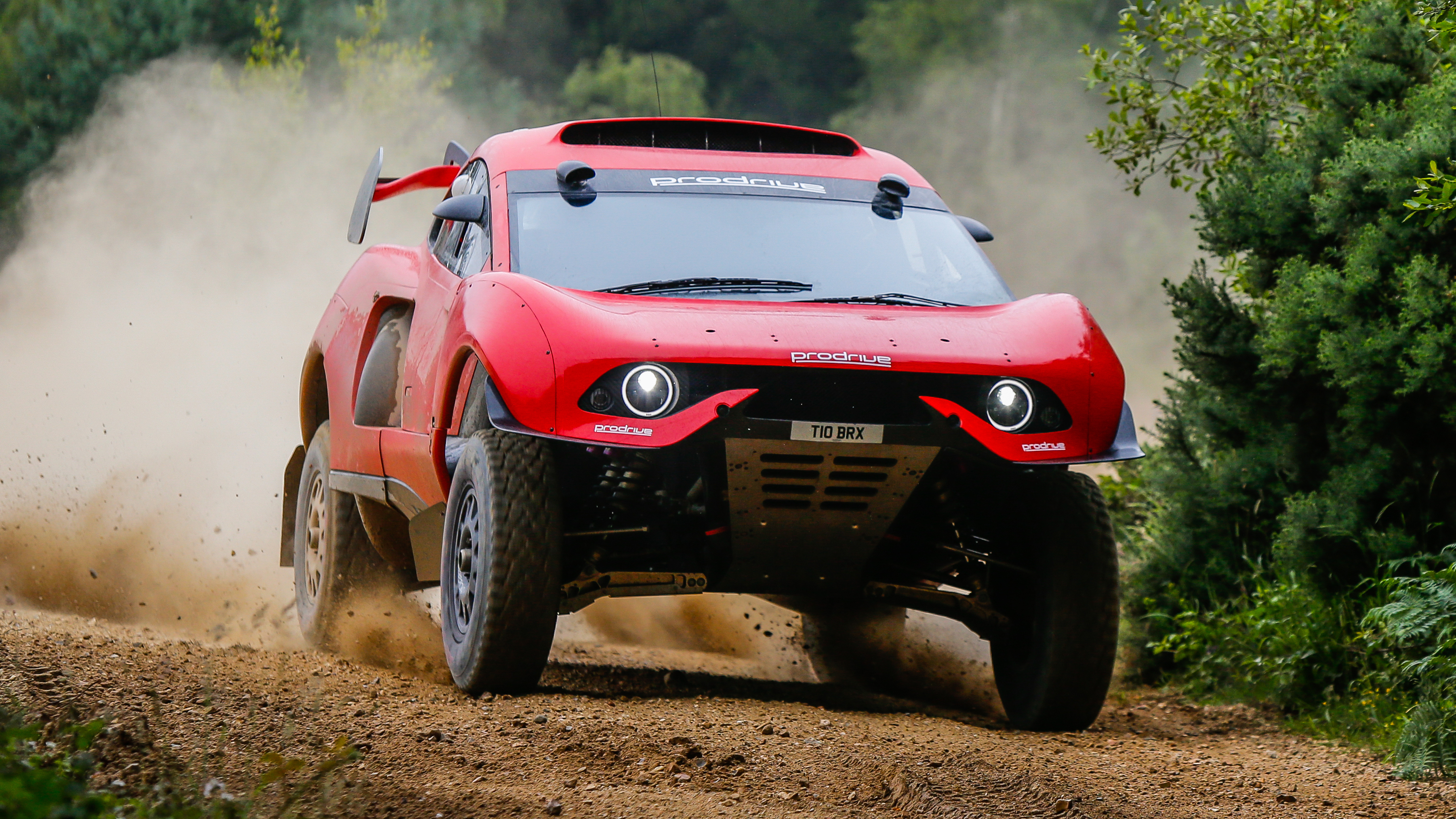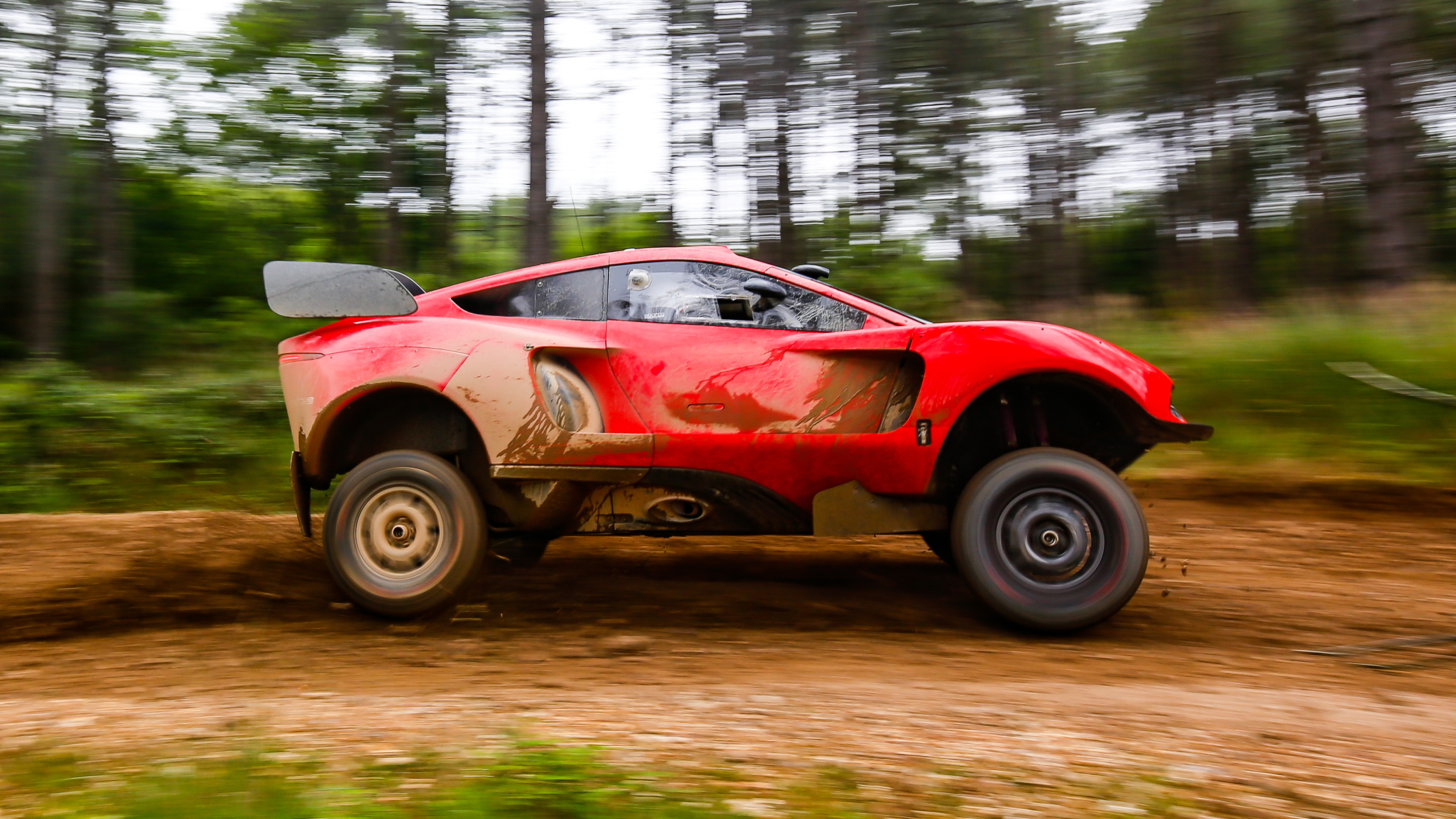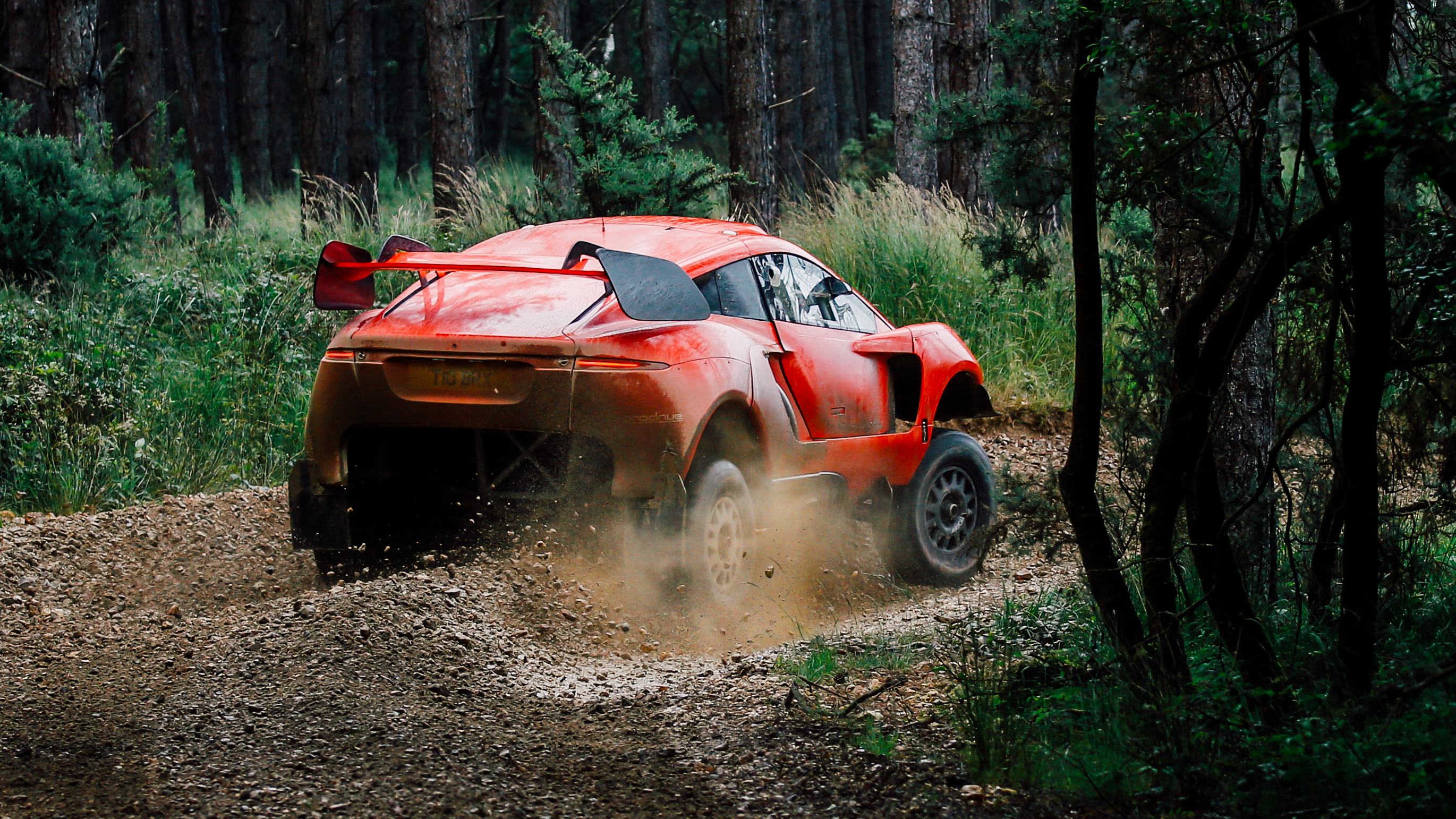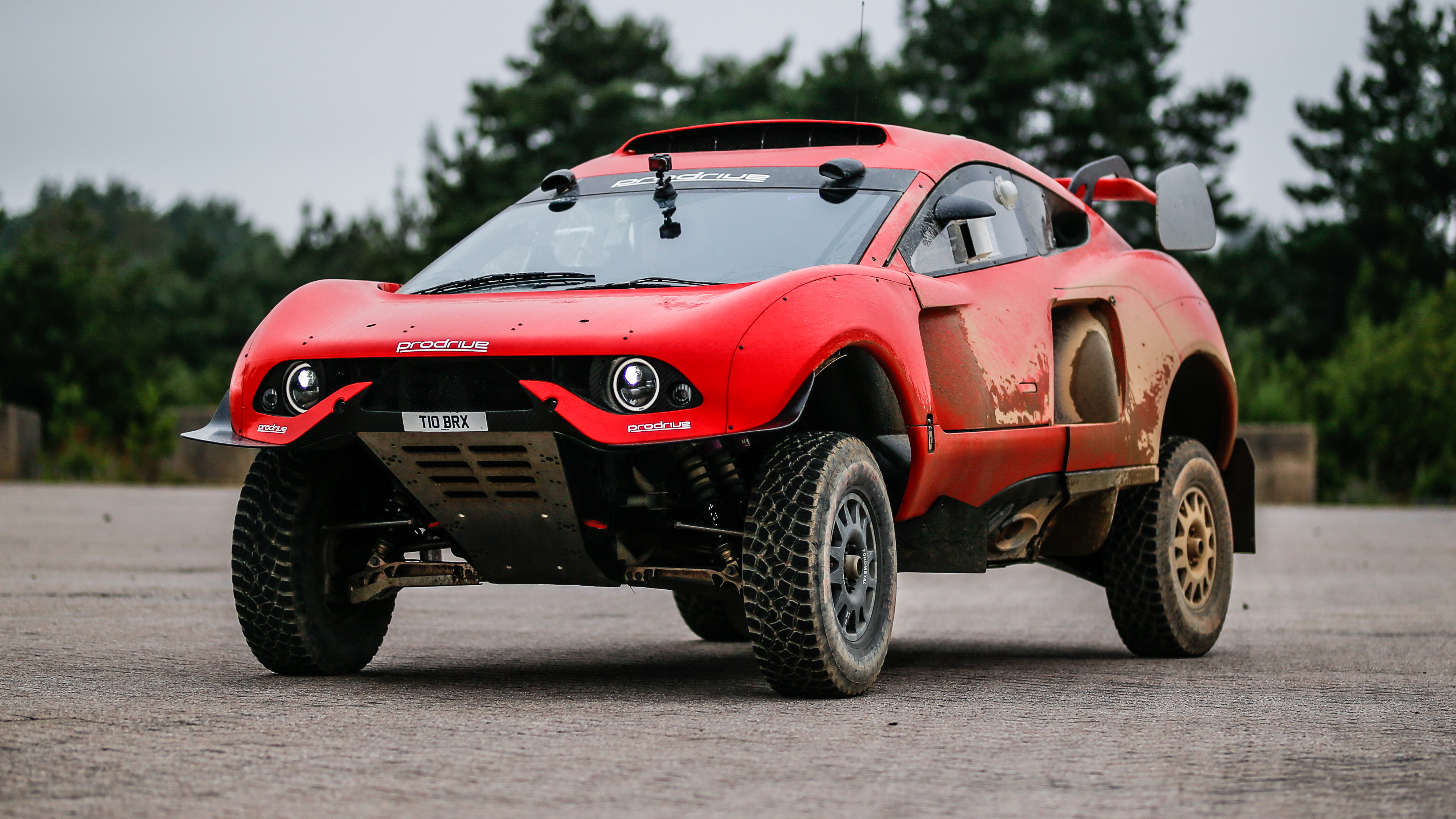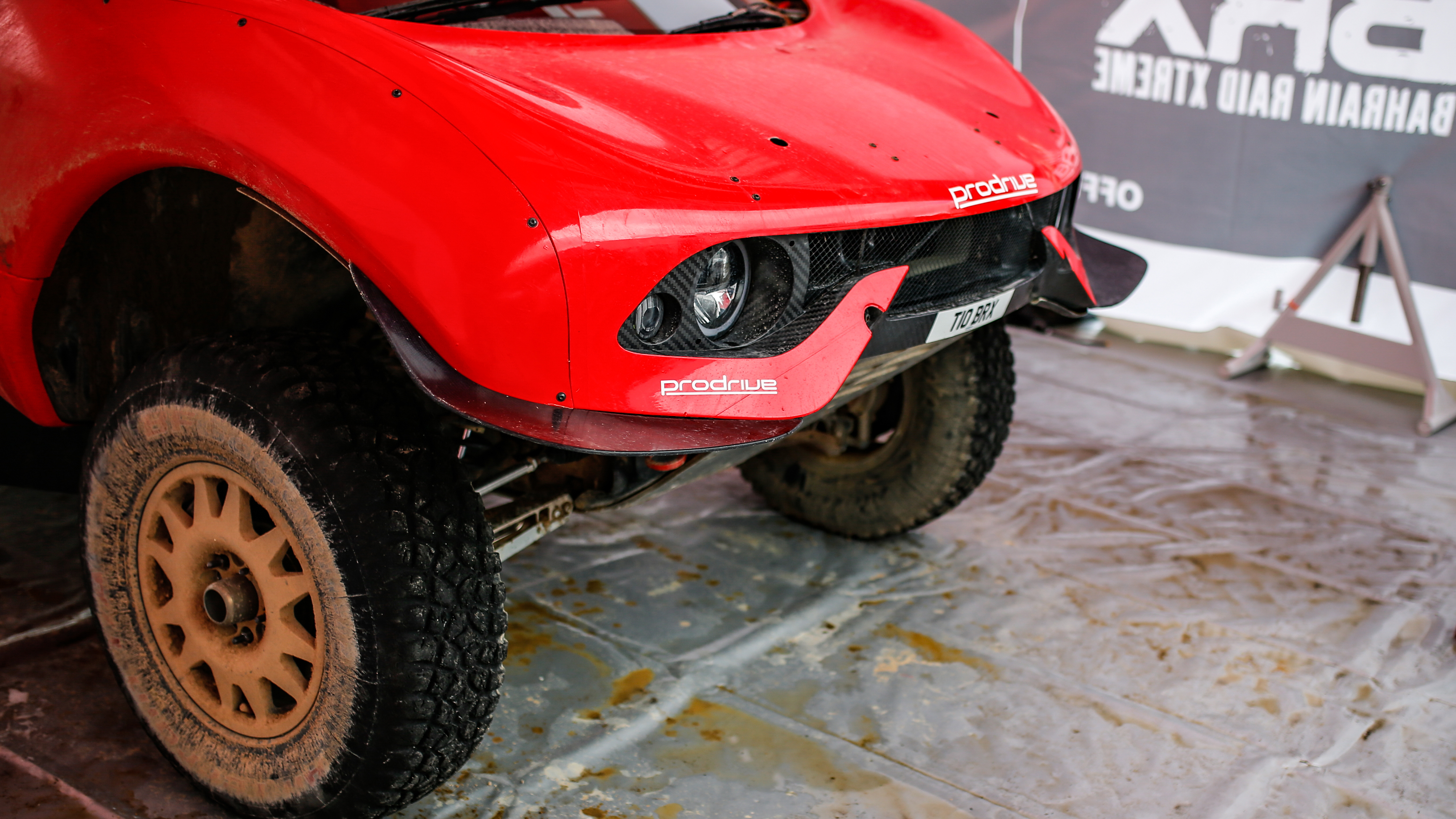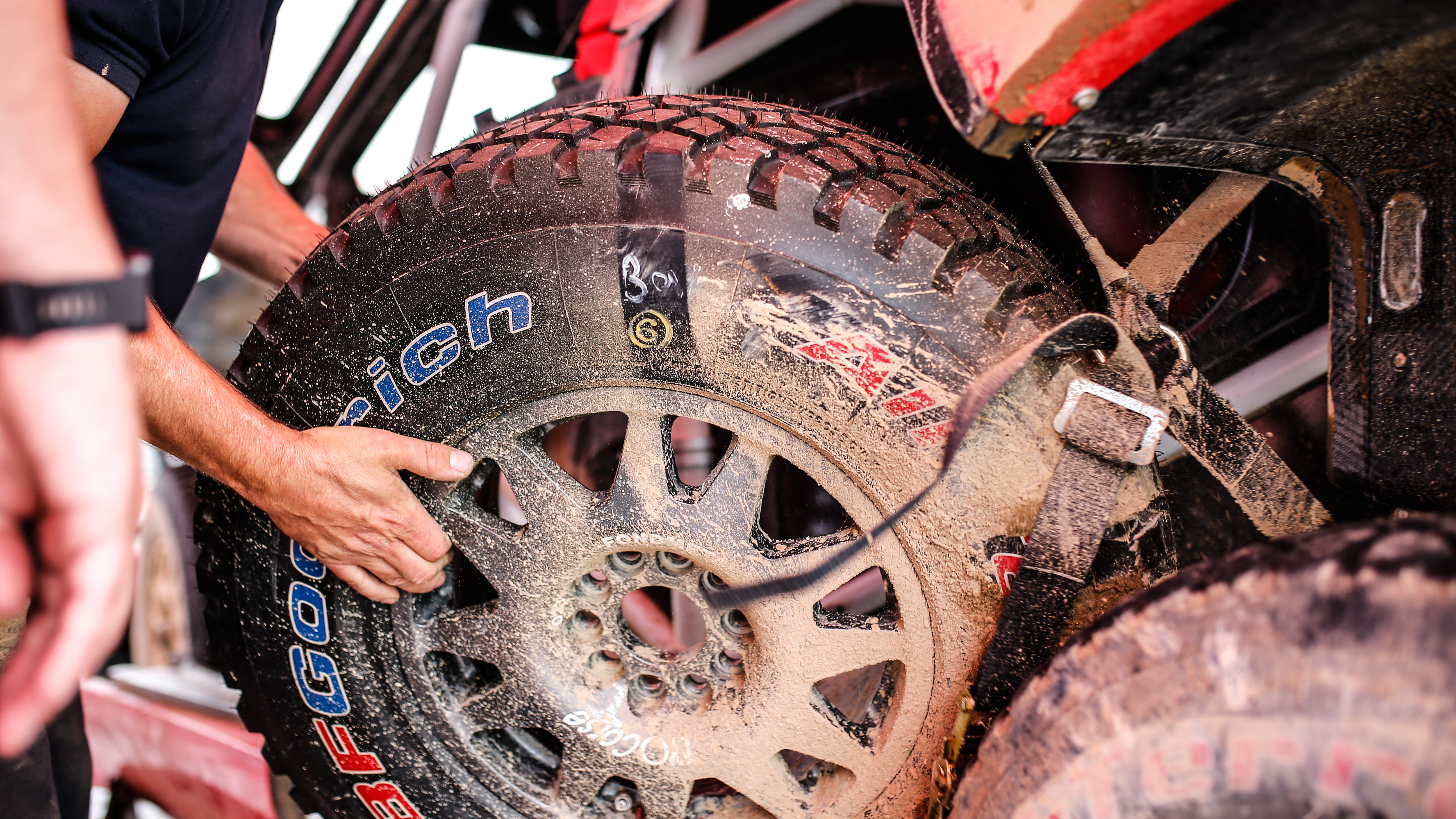
Prodrive BRX Hunter review: mad Dakar racer driven
Hmm. Is it as nuts as it looks?
You have no idea. TG.com has driven and ridden in all sorts of banzai stuff over the years, but this one really takes the biscuit. First, we’ll just quickly set the scene. This, obviously, is the BRX Hunter, a Bahraini-backed desert racer developed and built by Prodrive in Banbury. The headline aim is to conquer the Dakar, the world’s toughest race, which the new squad set out to do earlier this year. Nine times world rally champion Sébastian Loeb was in one car, Joan ‘Nani’ Roma in the other (he finished fifth, Loeb didn’t). Although he’s the less familiar of the two names, this Spanish racer has entered every Dakar since 1996, and contested it on two wheels (he won on a KTM in 2004) before switching to four (he drove the victorious Mini in 2014). Today, we’re joining Nani and various other Prodrive names and potential customers for a shakedown at a sprawling tank testing facility in Bovington, Devon. This is appropriate because the Hunter is part WRC car, part tank itself, a 1.8m-tall Frankenstein’s monster of a thing designed to do things that go far beyond the remit of most ‘normal’ cars. We’ll be alongside Roma for a few laps of a test track before having a go ourselves. And although your correspondent has been in several WRC cars and once drove Ari Vatanen’s 1987 Dakar-winning Peugeot 205 T16 – top three best drives ever – this is above my pay grade. It’s above most people’s pay grade.
Right. Still, what could go wrong? Apart from trashing a multi-million pound rally car, eh. Remind us of the Hunter’s technical specification.
Well, it’s complicated and not complicated at the same time. Look at the FIA’s rulebook for Formula One and you really would need to be Adrian Newey to decipher it. Apparently the equivalent document for the X1 cross country rally class is a mere 16 pages – and half of it is in French (probably detailing the locations of some good restaurants en route). Which isn’t to say that this thing doesn’t drip with motorsport technique and lateral thought. And the sort of toughness that could see it dropped from a Chinook into the desert from 1,000ft.
Go on…
Here are the highlights. Dakar entries can be petrol or diesel, and two- or four-wheel drive, and there aren’t really that many constraints beyond that. Peugeot and others have recently fielded rear-drive buggies in the race but the organisers and the FIA have suggested that’s not really a viable future direction, so Prodrive elected to go four-wheel drive. This meant a higher minimum weight of 1,850kg (dry and unladen), and also that the drivetrain configuration would favour putting the engine at the front and the enormous 500-litre fuel cell behind the rear roll-over bar. Think of what that does to roll stiffness, ride height and damping, and how these things can all change during the various stages of the race. It also has repercussions for the size of the cockpit: in the BRX the engine is right underneath the windscreen, with the gearbox behind it. It’s a big car, but the cabin – the place in which driver and co-driver spend up to eight hours a day thundering across desert, dune and rocks – is somewhat snug. And hot. In fact, positively claustrophobic. As we’ll find out shortly. (NB: these guys are certifiable lunatics.)
And the engine itself?
Prodrive went with Ford’s hale and hearty 3.5-litre twin turbo V6 Ecoboost, making a legislated 400bhp and 500lb ft in this installation. So it’s not too stressed, at least in terms of demand, and it’s dry sumped here on account of the often obscene angles these cars pull in the heat of battle. Prodrive switched the standard turbos for Borg Warner items, which meant reworking the exhaust manifold. A new Bosch control system manages the engine’s calibration and mapping. There’s a robust Sadev six-speed sequential shift gearbox (no paddleshift here), hydraulic handbrake, and front, centre and rear differentials. The chassis is a high strength tubular steel spaceframe, while the body panels are carbon fibre composite. The body itself is the work of former Jaguar design supremo Ian Callum, and his distinctive imprimatur is clear to see (and bodes well for the upcoming ‘road’ version). The suspension uses double wishbones on each corner supported by Reiger twin dampers. (There are no adaptive dampers or electronically controlled torque vectoring diffs.) According to chief chassis development engineer, Paul Doe, the lower wishbones can withstand a big impact without collapsing and damaging the chassis. There are bespoke wheel bearings, and the hubs can be changed quickly. The wheels and tyres are, as you’d imagine, hefty items, and weigh about 40kg each. Cooling is more important on the Dakar than aero; the rear wing is about high speed stability rather than downforce, and can help sharpen handling at lower speeds, too. Note that the BRX Hunter is not a 200mph projectile: its top speed is limited to 180km/h (112mph). That’s plenty fast enough across desert terrain, for eight hour stints. Note also that while there is GPS, that’s for the organisers to track the vehicle. The co-driver has to navigate using a roadbook.
So how does it all feel on the move?
Utterly extraordinary. As is Nani Roma. That much is evident from a chat over a cup of tea, while mechanics prep the car between demo runs. I’ve long held a theory that WRC’s top drivers are the best in the world bar none, sublime improvisers blessed not just with huge speed and bravery, but also mentally and physically dextrous. Would it surprise you to learn that Loeb was a champion gymnast before deciding to go pro as a driver? Roma is clearly made of the right stuff, too.
"While I was bike racing, I always brought my passport so if I was killed in competition in the middle of Africa, at least they’d know who I was," he explains. "This would go through my mind every morning. I was always nervous beforehand, until the adrenalin kicked in. Now I don’t like taking the risk on a bike, but I’m happy to do so in a car. In the car, I’m still good to fight."
I’m chewing over these words as I clamber into the Hunter. There’s little in the way of Loeb-esque physical dexterity on display here, let me tell you. In fact, should you suffer even minor back pain I doubt you’d be able to squeeze past the spaceframe at all. Once you’re in, it’s tight beyond words. This is either reassuring or troubling depending on how comfortable you are in confined spaces. Imagine having a panic attack in the middle of the Saudi desert, hundreds of miles from anywhere. These guys are next-level athletes, no matter what Nani says, and he reckons this is a sport he can do even as he closes in on 50 years old. Total dude.
"Cross country isn’t just pure speed, it’s so much more than that," he continues. "Which means we can keep competing. Even Seb said, ‘OK, my pure speed isn’t there any more so I’m finished in WRC’. It’s about how you process the information, deal with what is being thrown at you. And when you are younger you can slow it down." It’s just dawning on me that Roma and Loeb are doing Dakar because they no longer think they’re at the very top of their game on bikes or rally cars. Eh?
How was it, then?
The Hunter fires up with a weird sort of beat. It doesn’t sound as badass as it looks, let’s put it that way, but then it doesn’t in the Ford GT either. We have to use one of Bovington’s access roads to get to the test loop, and it immediately feels odd, like its centre of gravity is a bit off kilter. But we are sitting nearly two metres off the ground. Even trussed up in the co-driver’s seat you can sense the slightly lolloping gait of the off-road racer; for a serious competition car it’s amazingly – and necessarily – compliant. Nani chats away on the intercom, the gearbox thumping each ratio home. Very quickly, my brain has recalibrated itself. This doesn’t feel quite so weird.
Top Gear
Newsletter
Thank you for subscribing to our newsletter. Look out for your regular round-up of news, reviews and offers in your inbox.
Get all the latest news, reviews and exclusives, direct to your inbox.
Go on…
And then we get to the track, and Roma lets rip. Within 30 seconds I’m convinced he’s the single greatest driver I’ve ever sat beside. Sure, he’s also the guy who helped develop the Hunter, including two weeks at Millbrook basically trying to break the thing, so he knows exactly what it’s going to do and where. But even so, this is a masterclass. My eyes and brain are processing the huge dips and crests that are rapidly unfurling ahead of us, priming my body for the worst and preparing my nervous system. This is gonna hurt, surely. But it never comes. The Hunter simply soaks up all the abuse, rides the rocks and shards and debris like it’s just not there. The 4WD Dakar cars are permitted 28cm of suspension travel but it feels like way more, and the body control is surreally good. What it feels like is a giant WRC car. Nani’s not sideways absolutely everywhere, but he sure is busy at the wheel. Not that there’s much room for any heroics; I can’t help noticing that much of the track is lined with concrete slabs, and where there aren’t any of those there are trees instead. Sitting on the right-hand side of the cockpit some of these can seem uncomfortably close, but every millimetre is perfectly judged.The main central screen is alive with flickering numbers and data, but honestly I have no idea what speed we’re doing. I’m too busy marvelling at the superhuman reactions of the man behind the wheel. Then you realise that this is nothing compared to what the Dakar can spring on you. And that those surprises come thick and fast for eight hours a day for three weeks and 10,000km. These guys aren’t lunatics, they’re Gods.
Did you drive it?
I did. The test loop is superb, if a little tight, and this particular car is both very valuable and also locked into a busy itinerary over the next few weeks. Rarely have the consequences of stuffing something shuffled themselves more rapidly to the forefront of my mind. Hero to zero could happen in a nano-second. Unfortunately, however, the Hunter is like every other racing machine I’ve ever driven: it’s set up to do its best work at nine-tenths. What I can tell you is that once you’re ensconced behind the wheel it’s pretty straightforward to drive. The clutch is easy, the steering is light, the gearbox isn’t… light, but it’s also not too obstreperous. One of the Hunter’s key exterior signatures is that stubby nose and the low windscreen. That’s to give the driver proper vision, especially when airborne over dunes and fast crests. I just about manage to stretch the suspension’s travel a little without needing to notify air traffic control. The Hunter is astonishingly supple and easy to throw around at moderate speeds, and I imagine it would be sensational at full tilt. Those concrete slabs and the proximity of trees – harder to deal with when you’re on the left side of the cockpit – keep me pretty grounded. As ever, though, the brutal truth is that this stripped out, precision engineered racing machine, from the company responsible for so many iconic competition cars, simply reaches the parts that even some of the most extreme high performance road cars can’t access. Which is good news for Prodrive, as it prepares to unleash a ‘road-legal’ version, certain in the knowledge that for some buyers even a 1,000bhp hypercar is no longer enough. They won’t be disappointed. This thing is magnificent fun. They’d need to sell lessons on how to get the best out of it, but maybe Nani or Seb would do the honours.
Sounds great. So what’s the plan?
Prodrive boss David Richards is fully committed to desert endurance racing, partly because he recognises some of the old glory days of rallying in the Dakar. "It’s more akin to the WRC the way we used to do it than it is now. This is adventure. World rallying’s a sprint now, and there’s nothing wrong with that. It’s just a different sport," he tells me.
As for the commercial proposition, here’s the pitch. "Most hypercars are about high performance. No-one’s made one based on adventure or going into the unknown. We thought, why don’t we make it a bit more sophisticated, there’ll be more power from the engine – 600bhp or so – a few more creature comforts inside, longer travel suspension… we spoke to a few people and they said, ‘if you’re thinking of doing something like that, I’d have one."
It’ll cost about £1m (plus local taxes). He continues: "You know, Loeb was half-hearted about joining us. So we got him over to England and he said it was a transformational moment. He said, ‘it’s a heavier world rally car. No one’s done a car quite like this."
And you wouldn’t argue with Sébastian Loeb, would you?
Finally, note that the Hunter has also just been updated, following some technical and regulatory changes ahead of the 2022 Dakar, and Audi’s big budget arrival. The T1+ is 300mm wider (at 2.3m), and the biggest visual difference is that it now rides on 37in tyres and 17in wheels (rather than the 32s and 16s on the car TG.com drove). It’s also got longer wishbones, bigger brakes and revised dampers, amongst other changes. Bigger headlights, too. It looks tough as hell now. Game on, as they say.
Images: Tom Banks | McKlein
Featured

Trending this week
- Car Review
BMW 1 Series




